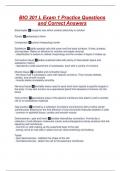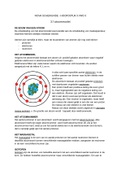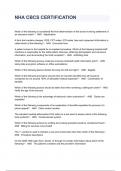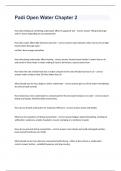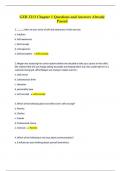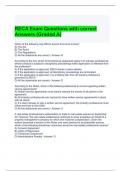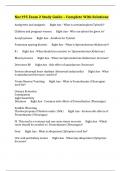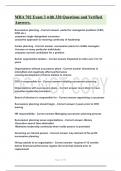Exam (elaborations)
BIO 201 L Exam 1 Practice Questions and Correct Answers
- Course
- Institution
Electrolytes inorganic ions which conduct electricity in solution Pyretic pertaining to fever Comparator control (integrating) center Epithelium tightly packed cells that cover and line body surfaces. It lines, protects, and secretes. Relies on diffusion for nutrition and waste removal - classif...
[Show more]
